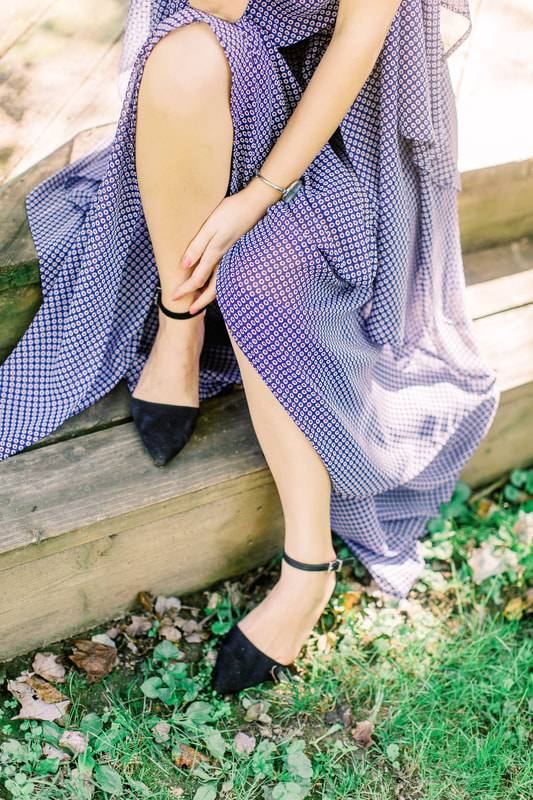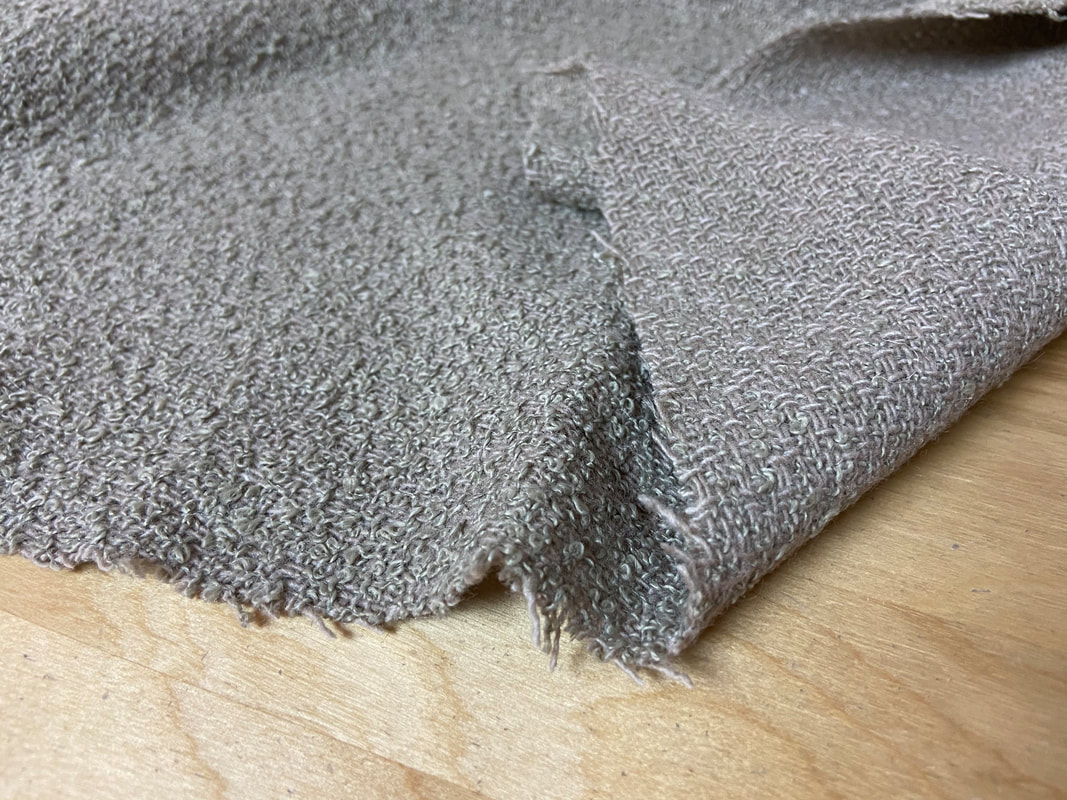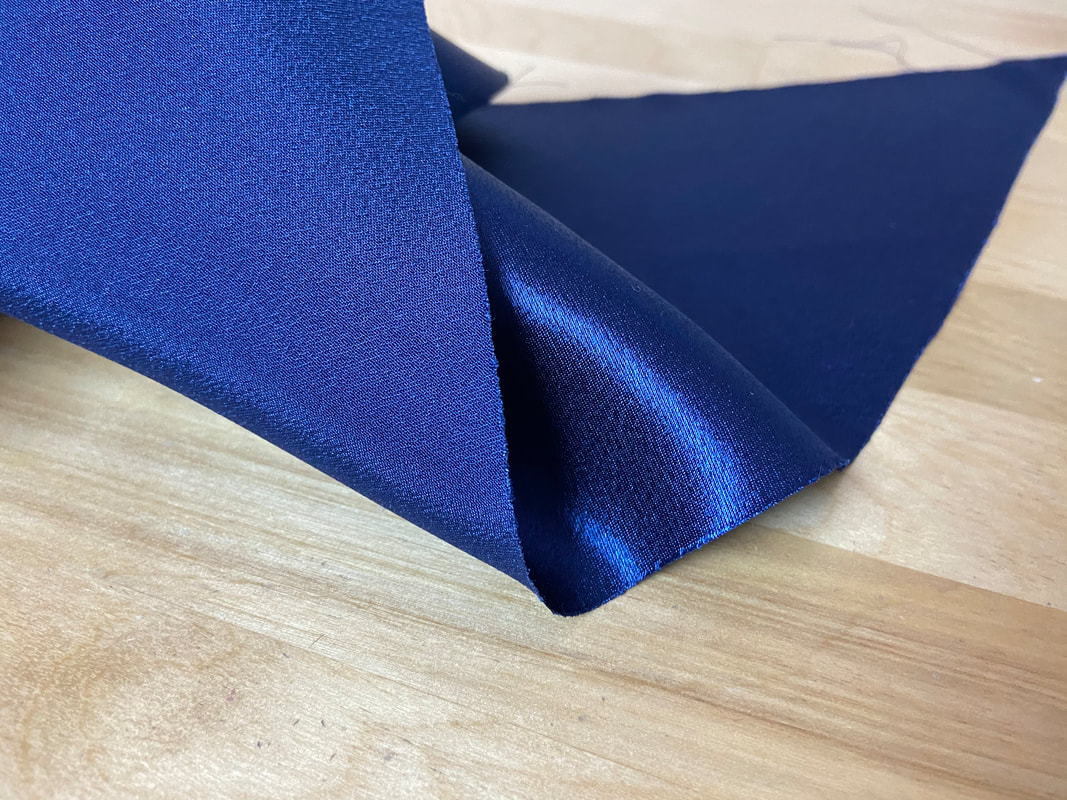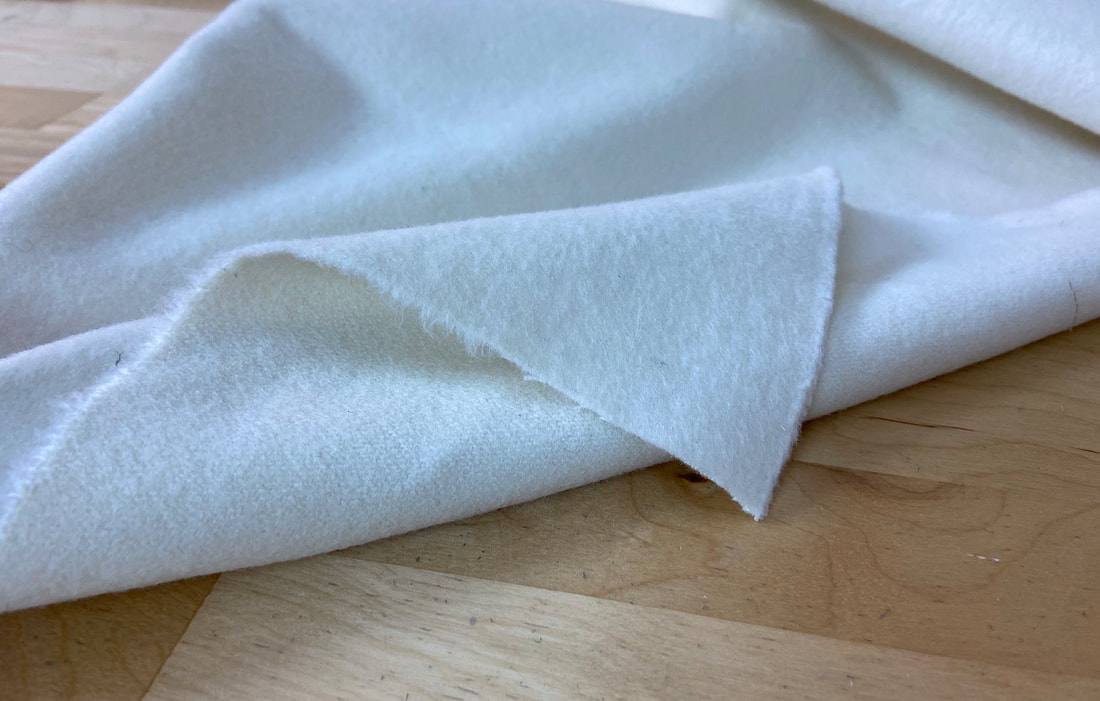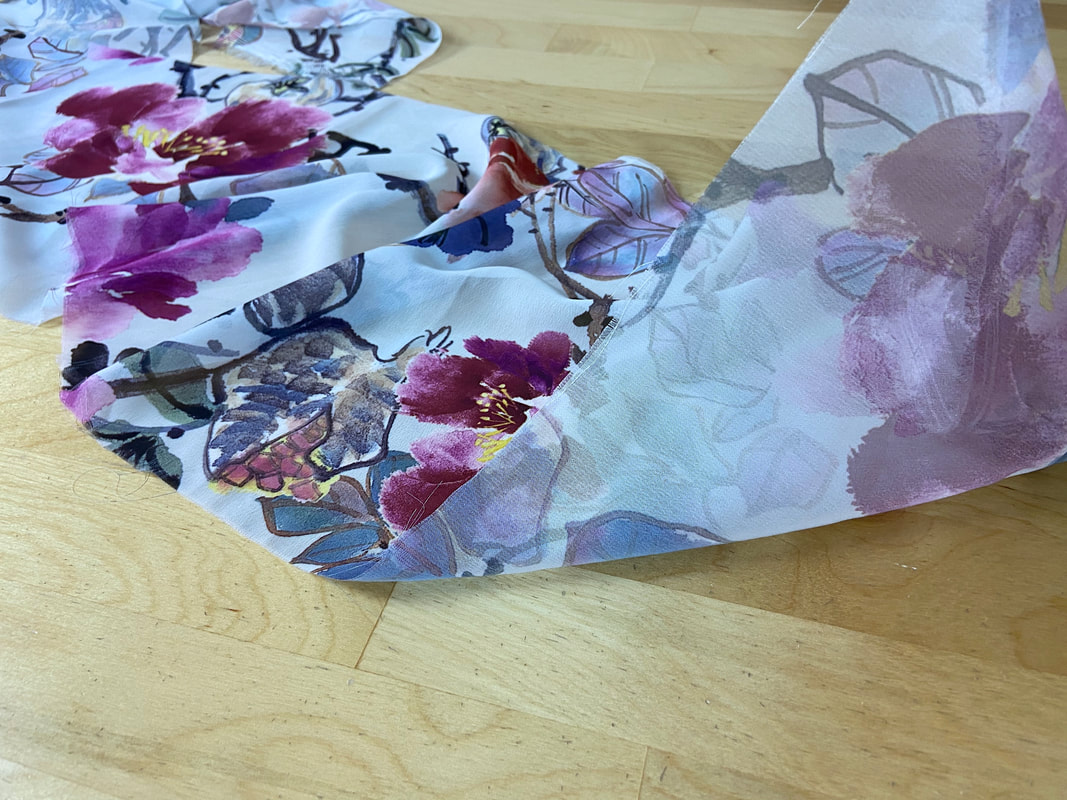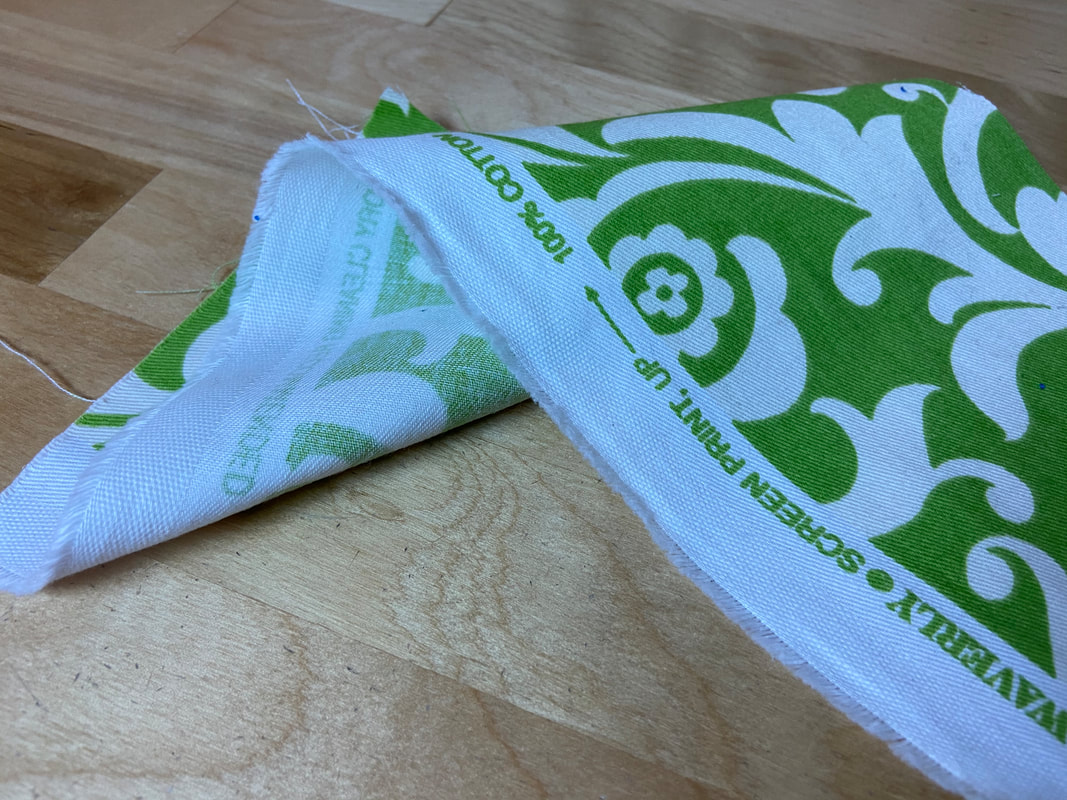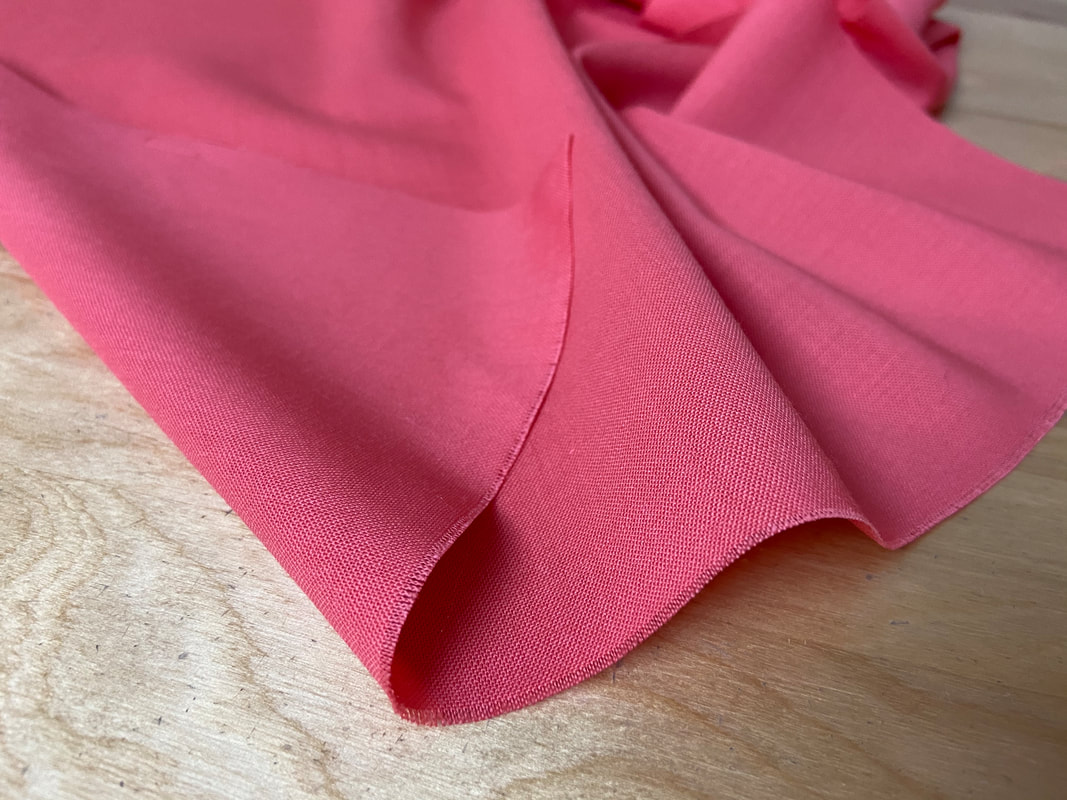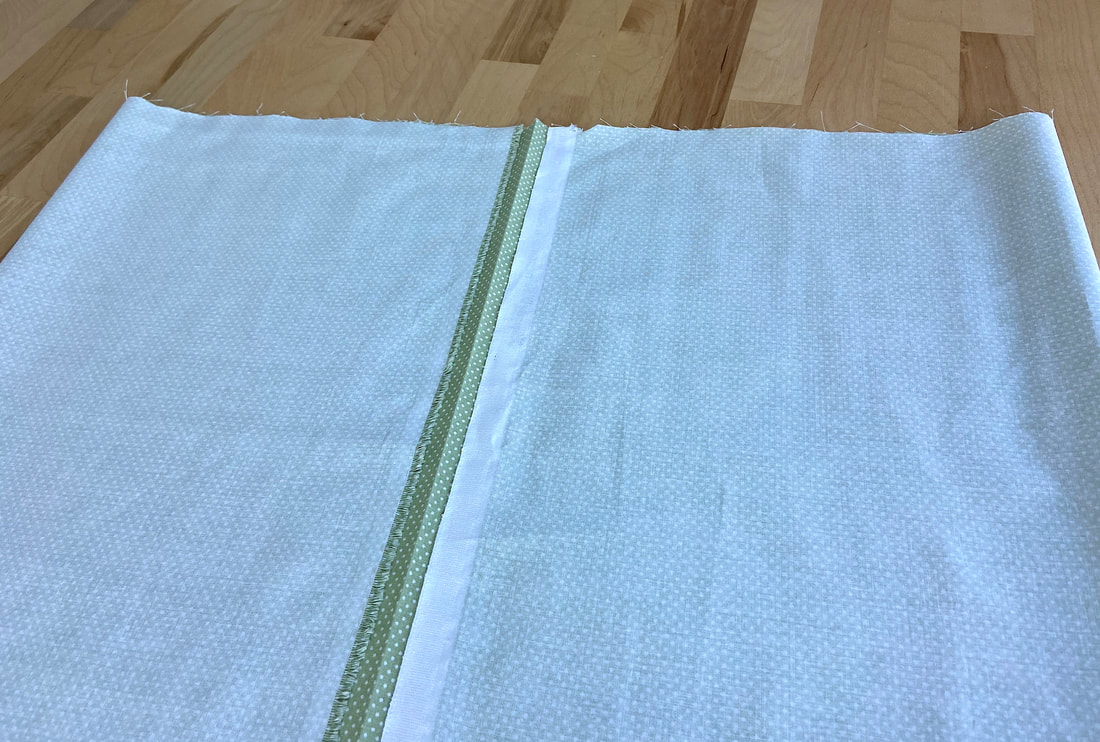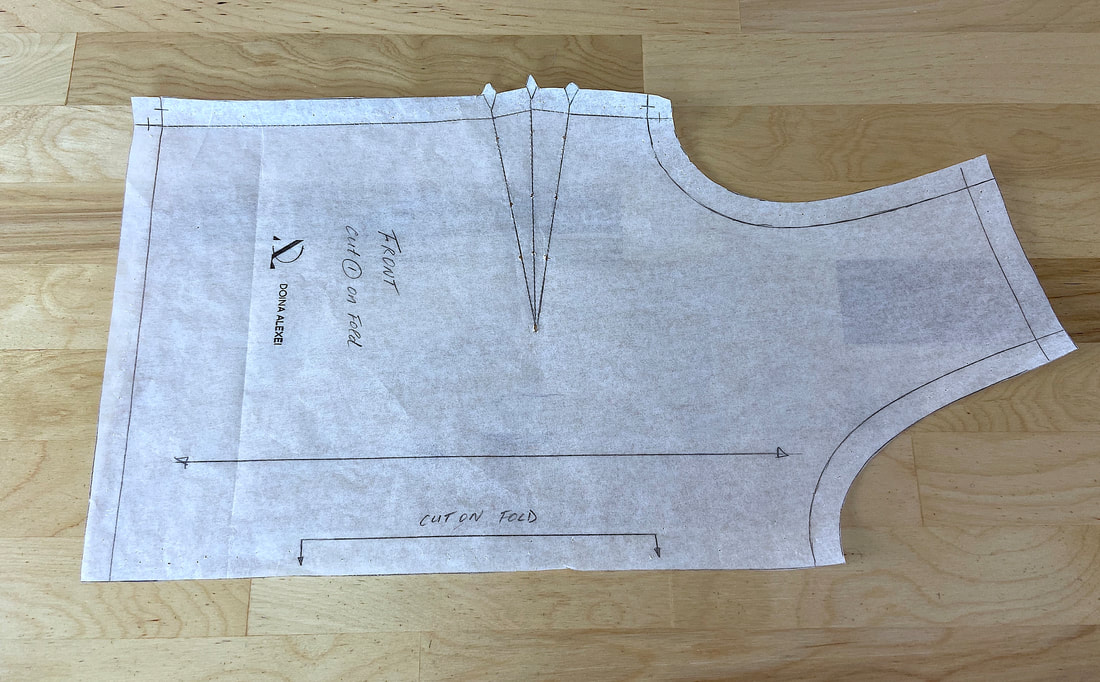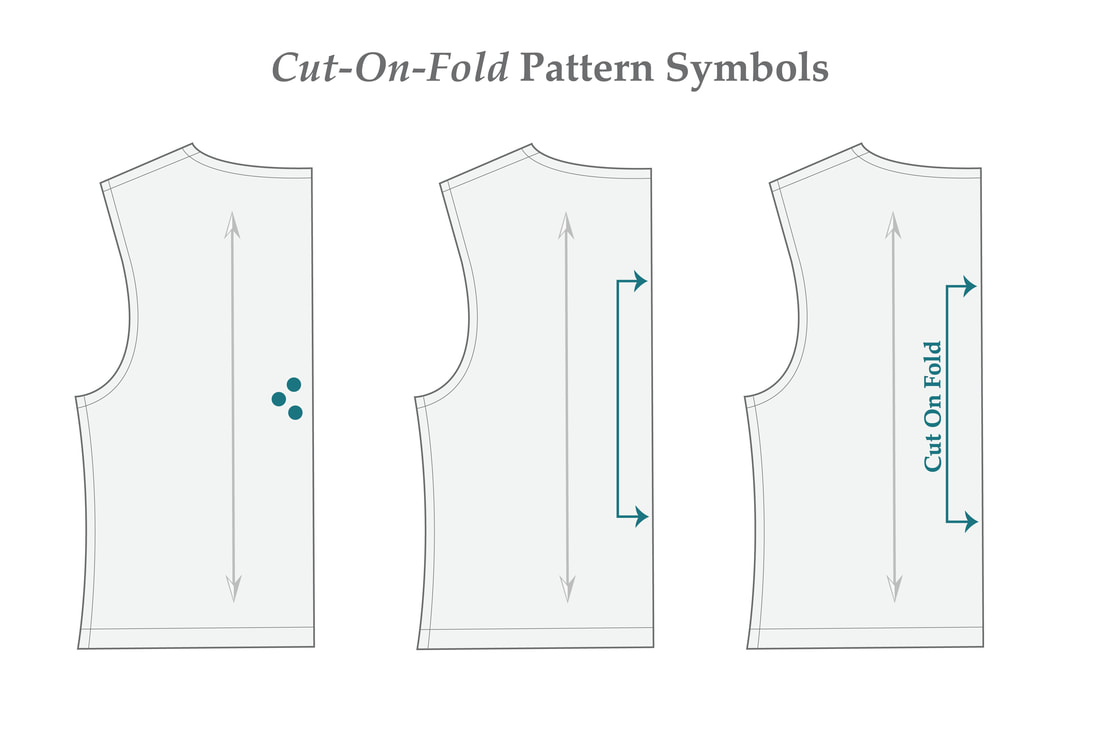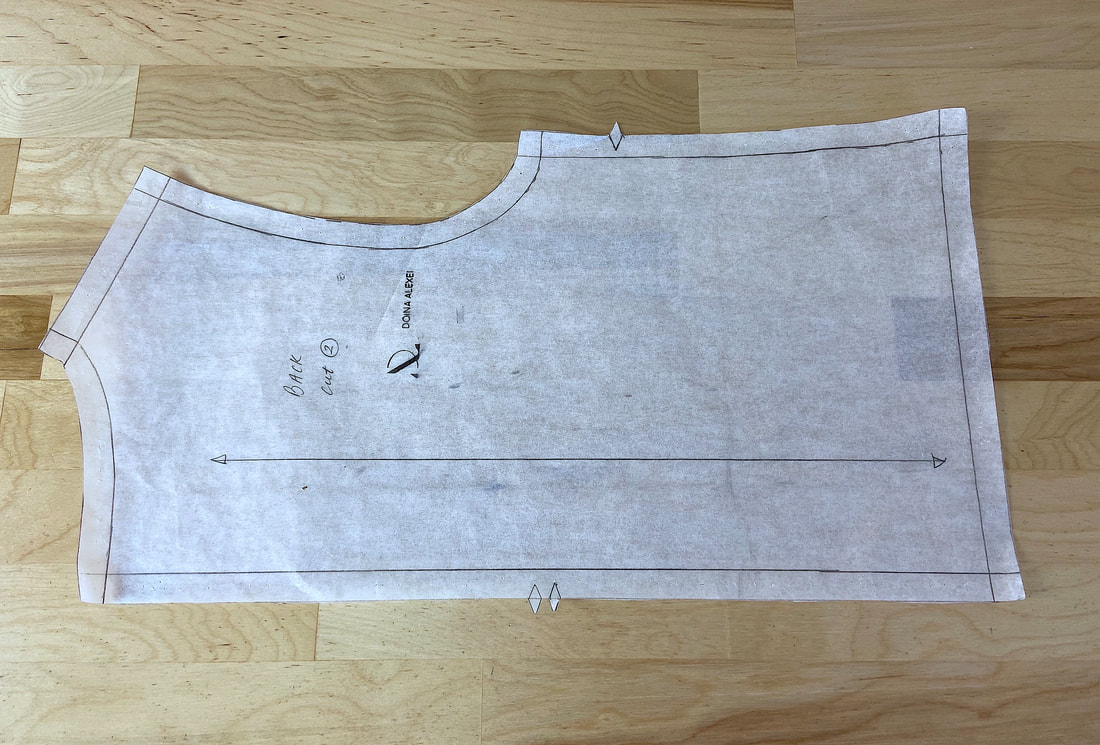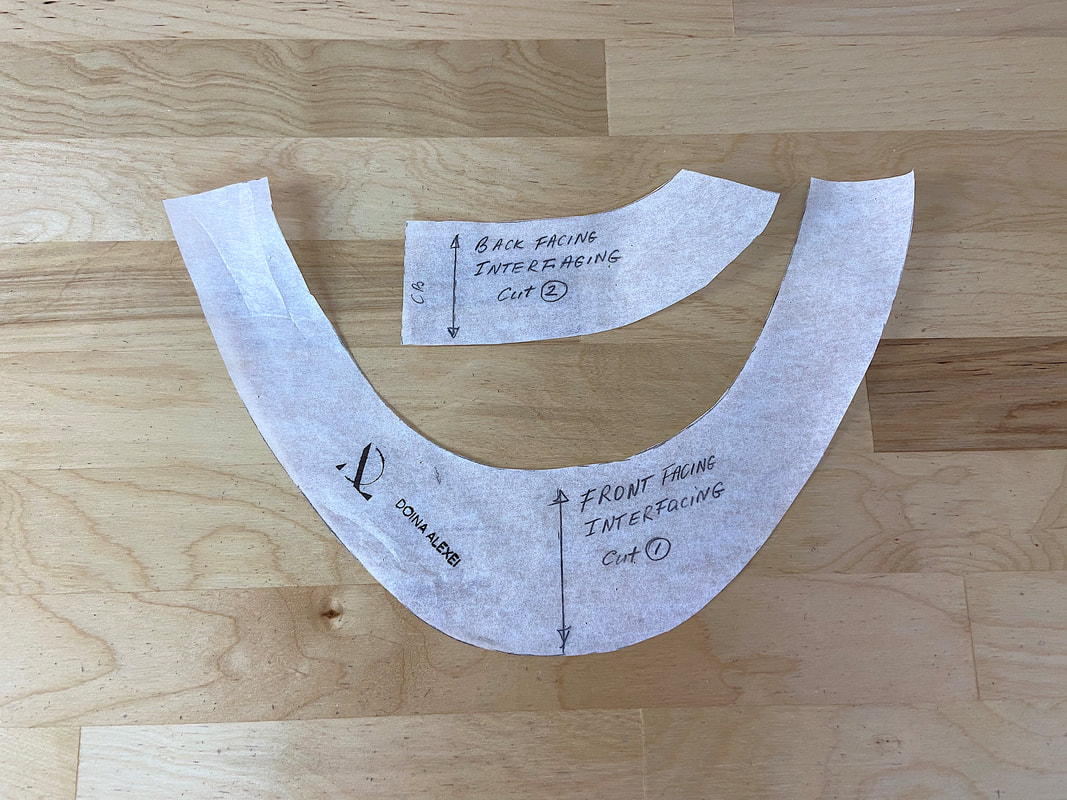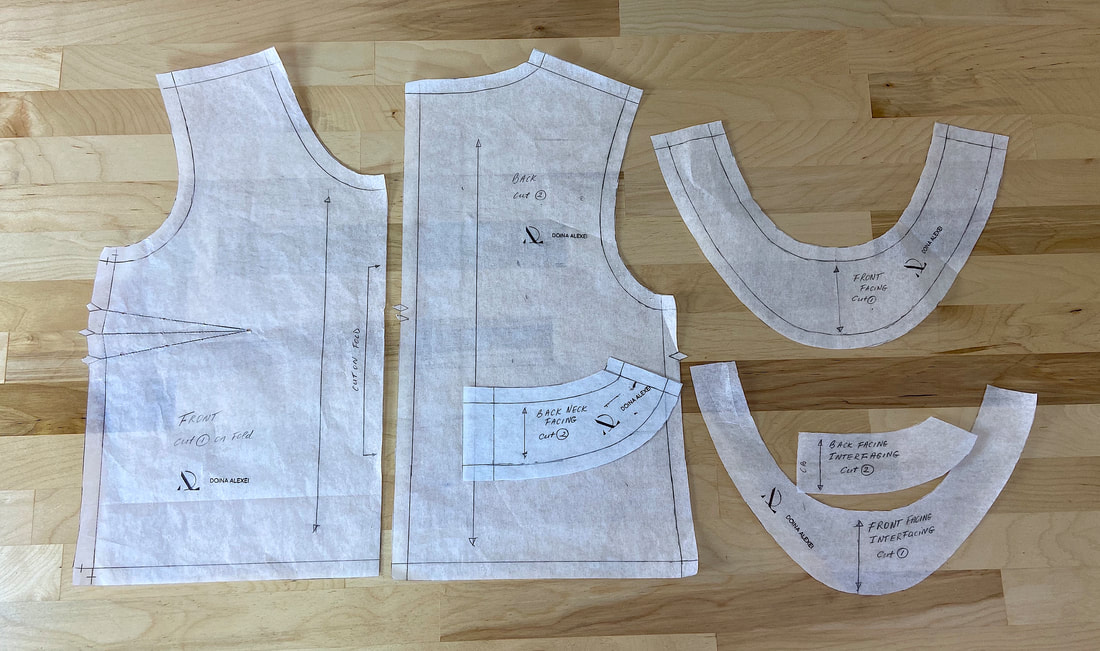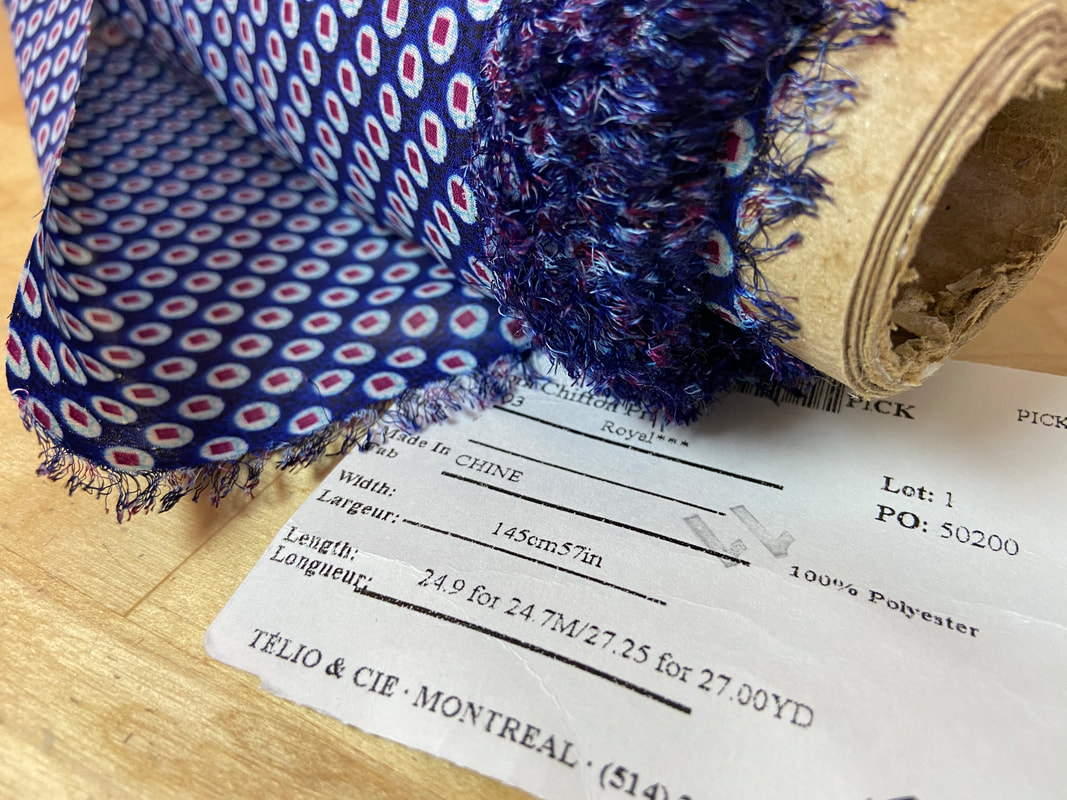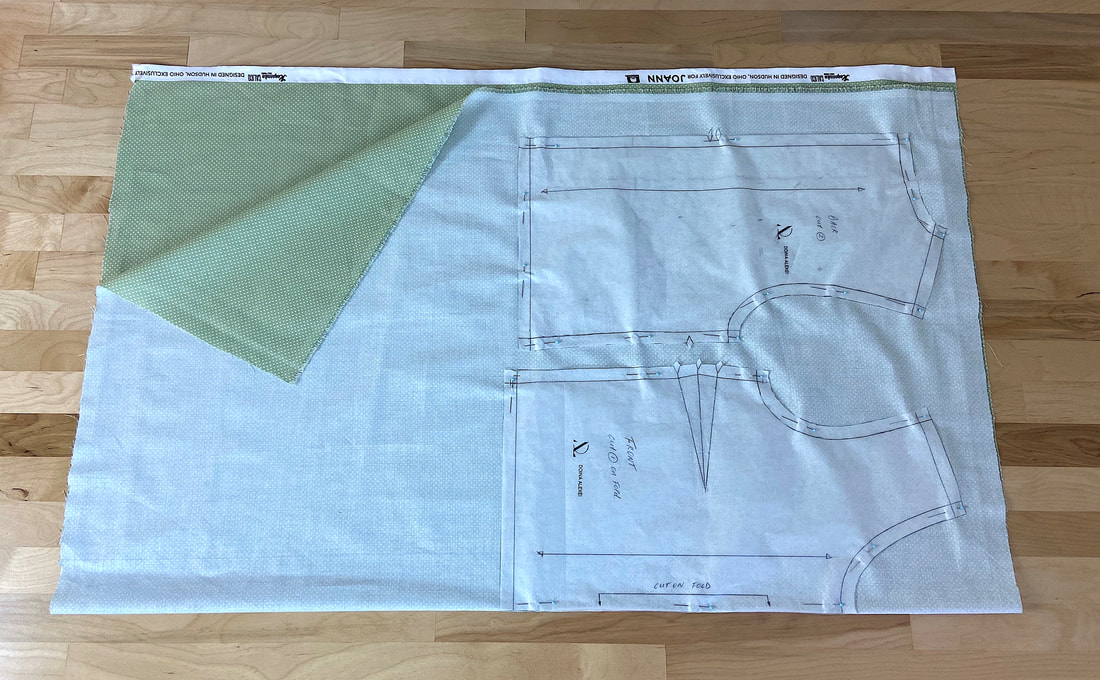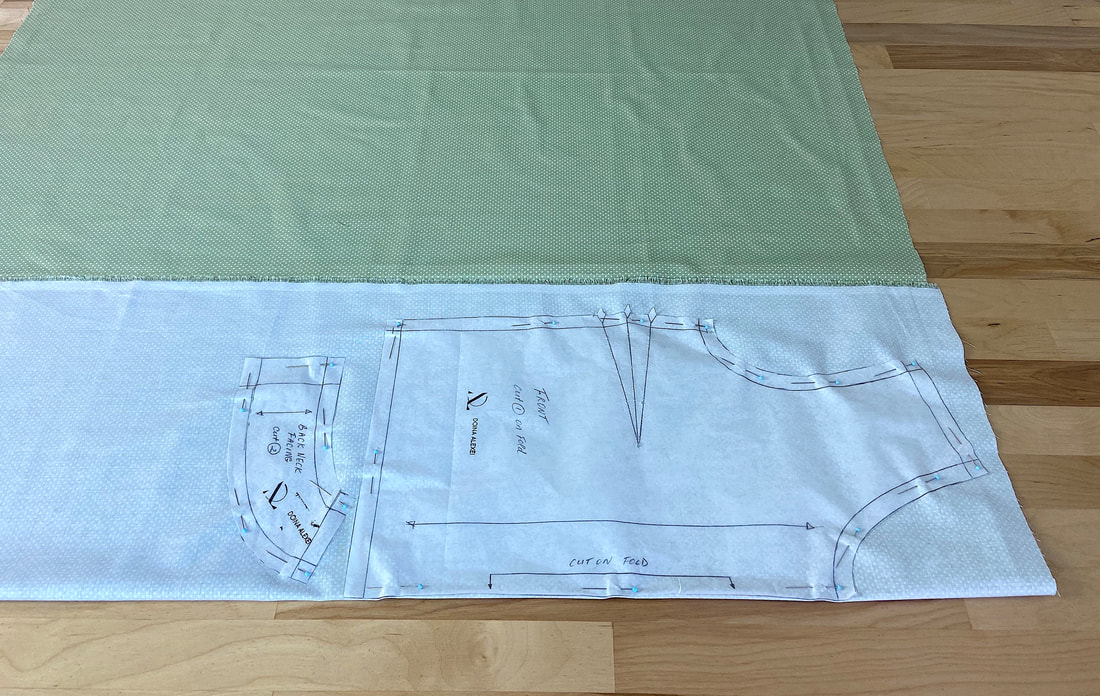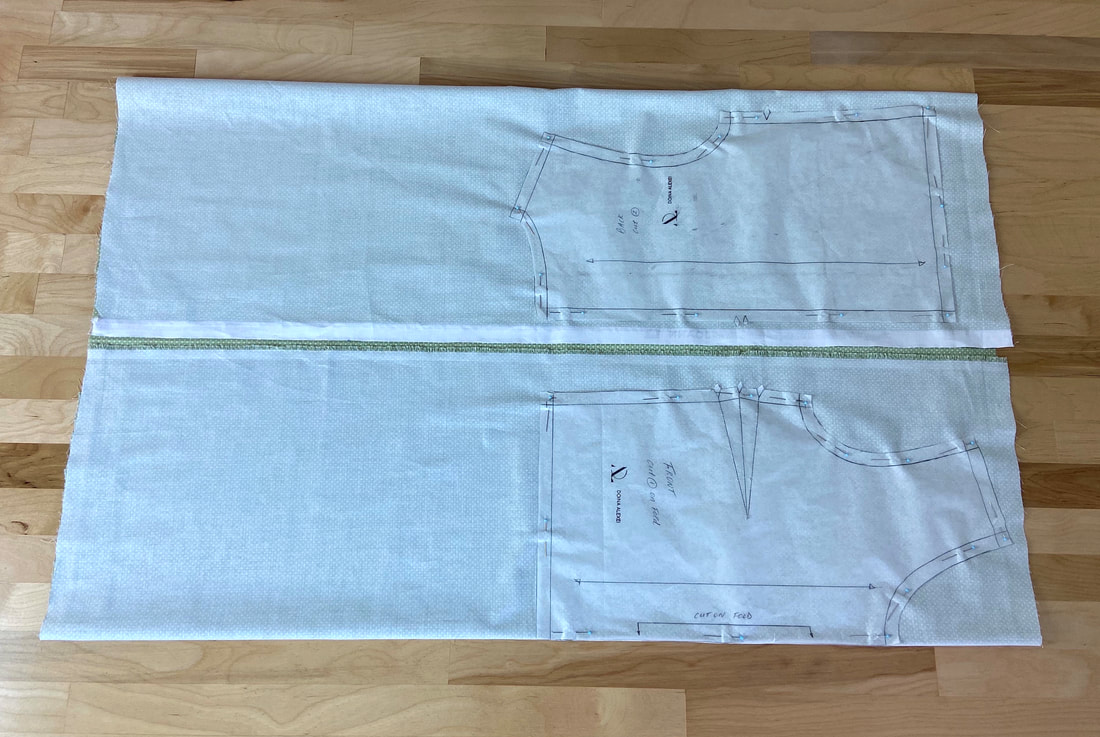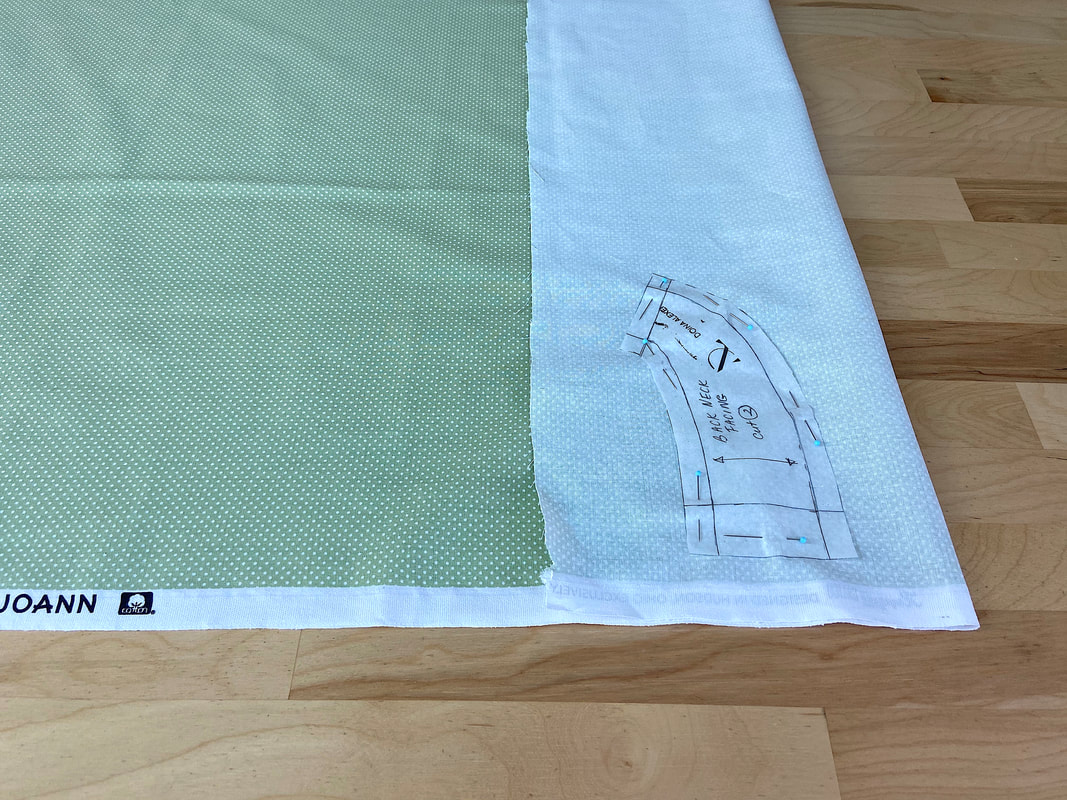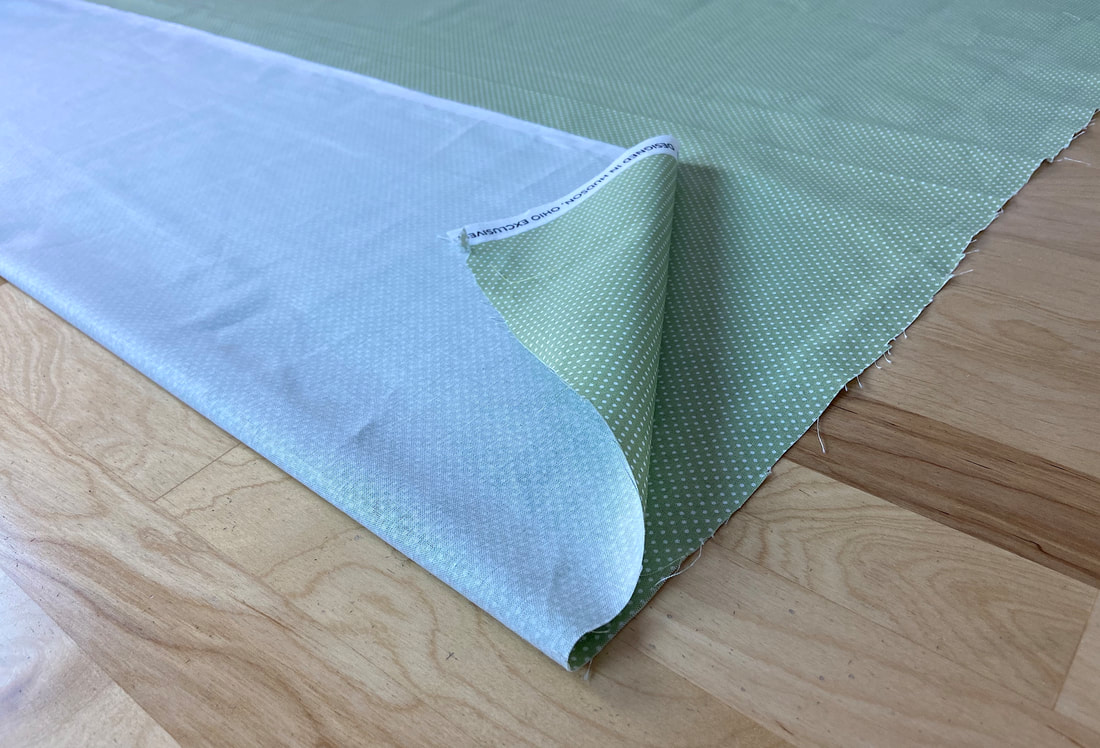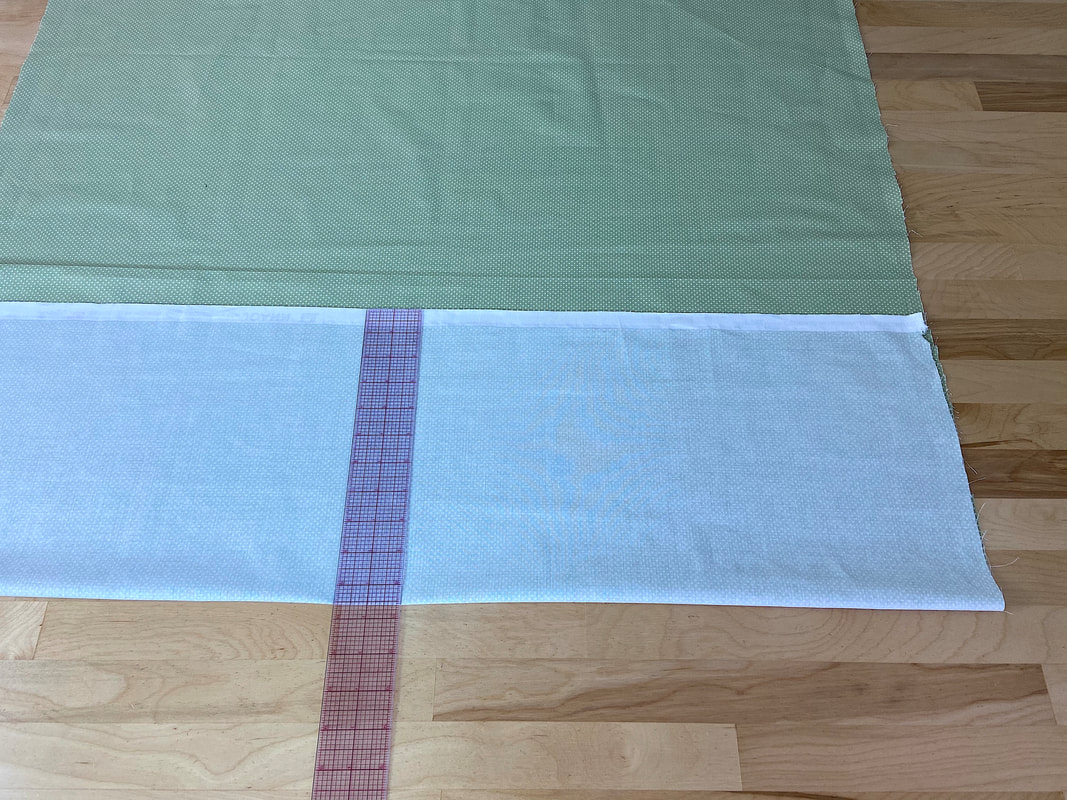Before aligning the pattern pieces, it is important that you analyze and understand the fabric first.
Identify your fabric’s face side (right side). The right side of most fabrics is fairly straightforward to find, although some fabrics will need closer inspection.
Here are some things to look for:
- Very textured fabrics are usually more pronounced on the fabric’s face side.
- Fabrics that have a shiny, slippery finish will usually be shinier and slicker on the face side.
- In some cases, woven fabrics will be softer on their right side.
- Colorful prints are brighter and more pronounced on the fabric’s right side.
If you can’t spot the difference by looking at the fabric surface itself, look at the selvage edge. Does it have any writing on it? If so, the side housing the marked writing corresponds to the fabric’s face.
Some fabrics are almost identical on both right and wrong sides. For that reason, it is up to you to choose a designated face side. Make sure you mark your chosen side with tailor’s chalk or a fabric pencil to keep the cutting process consistent.
If you tend to like the look of a fabric’s wrong side more, feel free to use it regardless of how different it may be in comparison to the face side. As a designer, you make your own rules!
Before proceeding, analyze the fabric carefully for stains, defects or any print misalignment caused on the manufacturing level. Prepare you fabric for cutting following the steps in this tutorial: How To Prepare Fabric For Sewing
If your fabric was purchased off a bolt and stored in a folded position, you will need to iron out the center fold line in the preparation process. If the crease does not come out, don’t include the folded portion on any of the patterns to be cut.
A double fabric fold (described below) can be used to navigate around and avoid this permanent crease during the pattern alignment and cutting process.
Preparing The Garment Patterns For Cutting
Determine how many times each pattern piece should be cut. This should be displayed on each one of your patterns with a clearly marked number.
Make sure you understand what each pattern piece corresponds to whether it is for the front, back, facing or a detail piece like cuff or pocket. Only keep the patterns you need in front of you to avoid any confusion.
At this point, make any necessary changes to your patterns if desired. The most common alteration is shortening or lengthening a hemline or taking in the sides. If this is one of your very first sewing projects, it is advisable that you skip this alteration step for now.
Note: If your patterns are wrinkled, you can press them with a warm iron to smooth the paper out. Be careful not to accidentally add steam especially if your patterns are made of very thin tissue paper.
There are 3 main types of sewing patterns you should be familiar with as a beginner:
Cut on Fold Patterns: cut on fold patterns always have one edge that will be aligned with the fabric fold.
You can spot these patterns easily by looking for any one of the above symbols along the cut on fold edge.
Full Patterns: cut as a single fabric layer or multiple fabric layers. When multiple fabric pieces of the same pattern are needed, the fabric is usually folded during the cutting process. As opposed to the cut on fold style, these patterns do not have any edges that are aligned with the actual fabric fold.
Interfacing Patterns: usually have no seam allowance or less seam allowance than the pattern pieces they correspond to.
Although each pattern company should provide a cutting guide sheet, this tutorial will walk you through a simple process based on your own (desired) layout in accordance with the pattern grainlines. The techniques described below are applicable to cutting any style sewing patterns as long as you understand the difference between full and cut on fold patterns (described above).
Step 1. Separate and group the patterns by the following categories:
Cut on fold patterns
Patterns that only require 1 full cut
Patterns that need 2 full cuts
Patterns that require more than 2 full cuts
Step 2. Ask yourself if your fabric will need to be folded? If in Step 1 above you identified double-cut or cut on fold patterns, your fabric will need to be folded in the cutting process.
Fabric width is important as it can guide you in the process of deciding how much lengthwise yardage you need for your sewing project. Most fabrics are available at these three basic widths: 44-45”, 54”, 57" and 59-60”.
Width is always marked on the fabric’s bolt or roll. At the time of purchase, compare the fabric width to how wide your pattern pieces are taking into account how many of each piece you will need to cut. It is always good practice to get an additional half a yard in case of miscalculation or making a cutting error.
3 Ways to Fold Fabric In Preparation For Cutting
Full Fold Lengthwise: The fabric is folded down the middle lengthwise with both selvage edges touching. This is the most common folding style and is used when all or almost all your patterns are a combination of cut on fold and double-cut styles.
Partially Down the Lengthwise Grain: Fabric is folded only at the needed distance from the selvage edge. This is a fold often used when your patterns include both cut on fold or double-cut styles as well as single-cut patterns which require alignment on a single fabric layer. The fabric is folded just enough to accommodate the double-cut and/or cut on fold patterns leaving the rest for the single-cut pattern(s).
Double Lengthwise Fold: Both selvage edges are folded in. This folding technique is great to use when you need to avoid imperfections, soiling or permanent creases in the fabric layer. Fold both selvage edges in to meet at the location of the crease or imperfection. This double ended fold is similar to the full lengthwise fold (above) as it serves both cut on fold and double-cut pattern pieces.
Crosswise Fold: Although not conventionally done, sometimes it is smart to fold your fabric on the crosswise grain with the selvages folded onto themselves on each end. Doing so is advisable when working with very wide pattern pieces that don’t fit on the fabric’s lengthwise grain.
This fold is also commonly used when attempting to save fabric or not enough fabric is left to fully cut the remaining patterns on the lengthwise grain. Be careful with specialty fabrics that have a nap, directional print or heavy decorative elements since a crosswise alignment can affect the final look/design of the garment.
Fabric Folding Rules
The fabric should always be folded with face sides touching unless your fabric features a high pile or a highly decorative, bulky finish on its right side. Fabrics with such special finishes will lay flatter if folded with wrong sides touching.
Folding the fabric with the face sides touching will not only protect the face of the fabric in the cutting process, it will also facilitate transferring sewing markings from the patterns onto the fabric’s wrong side after they have been fully cut.
When folding, always make sure that the selvage edges are perfectly parallel to the fabric fold line.

